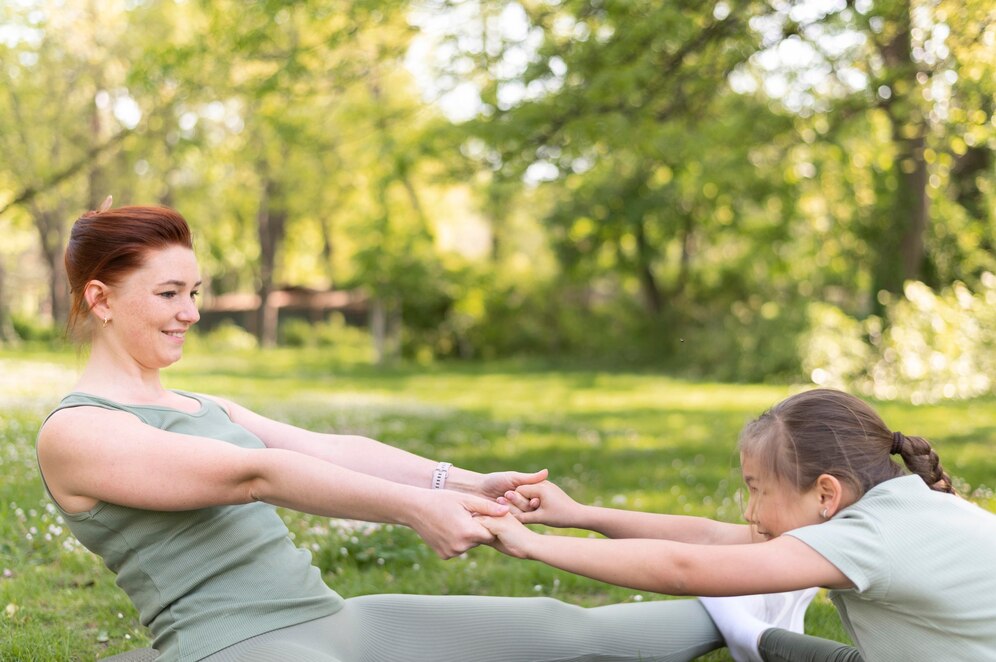Motherhood involves an everyday commitment to taking care of little ones, which can be physically demanding! From chasing toddlers to lugging around the things you need, moms are a tough bunch, but stayed sore, aching or uncomfortable, which makes staying active a bit harder. Have no worries, though… there is an easy compromise. In this article, we describe some common discomforts that many moms face, and also provide some tips on how to manage these discomforts and actively engage in physical activity. We will also show how staying active can be realistic for yourself and beneficial for the well-being of all involved.
Common Discomforts Moms Experience
Mothers often suffer many forms of physical discomfort from the demands of parenting. For example: back pain, joint stiffness, sore feet and muscle tension. Lifting children, standing on your feet all day, or just the overall strain on your body from daily tasks adds a large amount of pressure to your whole body.
For instance, you might find yourself thinking, why does the top of my foot hurt all of a sudden? Another example could be an over use situation, politically correct for bad shoes or even some minor injury that you are unaware of. The first step you must do is determine the cause of discomfort first, so it’s possible to address it and find a remedy.
Simple Strategies for Managing Discomfort
While it is not possible to completely eliminate discomfort, it is possible to manage discomfort and stay active.
- Rest and Recovery: Sometimes, the best thing for your body is just to rest. It may be a 10-minute rest period in the afternoon or a 12-hour sleep schedule, but allowing your body to rest will usually reduce discomfort and improve your overall feeling. A little time spent resting can help your body recover.
- Gentle Stretching: Stretching can help relieve tightness and improve flexibility and a lot of the time it will help manage pain. Ensure you stretch important areas: your back, legs, and feet. Stretching after a hard day or after exercise will sometimes reduce stiffness and soreness
- Proper Footwear: Many moms would spend their days on their feet, so wearing the correct footwear could make a huge difference. Supportive comfortable shoes which offer cushioning, arch support, and shock absorption.
- Self-Care Practices: There are very effective activities, like, using heat or cold therapy to help relieve pain and discomfort. Heating will relax tight muscles whereas cold will help reduce any swelling and inflammation. A regular heating/cooling pad can provide assistance.
If sudden foot pain occurs, remember you are allowed to listen to the body. The sudden pain could be as simple as overexerting yourself to something as complex as improper posture at varying times throughout the day – you never know! It’s always best to slow down, take a break, and listen to your body.
How Staying Active Benefits Moms
While it is important to manage discomfort, being active is equally important. Regular exercise is beneficial to everyone, especially moms who have many things to juggle.
- Physical Health: Staying active increases circulation, promotes strength, and enhances overall endurance. These benefits can reduce discomfort and make everyday tasks seem less daunting
- Mental Health: Physical activity is also good for our mental health. Exercising produces endorphins which can elevate mood and reduce stress – both factors that are helpful when managing the stressors of motherhood.
- Family Bonding: Staying active does not mean you have to exercise alone! It can be a way for your family to bond. Taking a walk in the park, road cycling, or playing tag with your kids is a way to keep everyone active and build bonds.

While you may be negotiating foot pain or discomfort, low-impact exercises such as walking or swimming are great options that will not be too taxing while accomplishing the same goal of staying active as a family!
Quick Tips for Moms to Stay Active Despite Discomforts
It’s all about finding a balance. Here are a few simple tips to keep you active even if you’re living with discomfort:
- Low-Impact Exercises: Walking, swimming, or easy yoga are all good ways to keep active with minimal added stress on your body.
- Incorporate Movement into Your Day: You don’t need a blocked time scheduled for a “workout” to remain active. Instead of taking the elevator, take the stairs. Walk to the park, with your kids or in a leisurely moment. Plan a light stretch during a commercial break from TV
- Hydration and Nutrition: Drink plenty of water and keep a balanced diet to help support your body’s energy level and keep your muscles and joints healthy.
- Listen to Your Body: Be aware of the signs your body may be showing. If it doesn’t feel right, then don’t push through it. Rest when you need to; move your activities to your comfort level as needed.
When to Seek Professional Help
Self-care and home treatments can be beneficial, but there may come a time when you will be really glad that you got attention from a medical professional. Any time you have pain or discomfort that is not resolving in the timeframe you expect it should, or that isn’t improving with rest, it is beneficial to have it looked at by a medical provider. For instance, it may warrant going earlier if you are in chronic and persistent pain, or if the pain prevents you from being active.
At minimum, a medical doctor or physiotherapist should provide you with an individualized exercise program and treatment that could help minimize discomfort and improve movement.
Conclusion
While it may feel like a juggling act to manage discomforts and stay active, it is altogether possible to maintain activity while managing discomforts with the appropriate strategies.

Avoid ignoring foot care, picturing movement as an activity of 5-60 minutes at one time, and developing little bouts of movement during your day are all small actions that can lead to noticeable changes. Get to know your body, take care of it, rest when you need it, and get professional input when you decide and need something more. Valuing how you treat yourself, will better enable you to continue participating in those pursuits you care about; like your wellness and your family.
